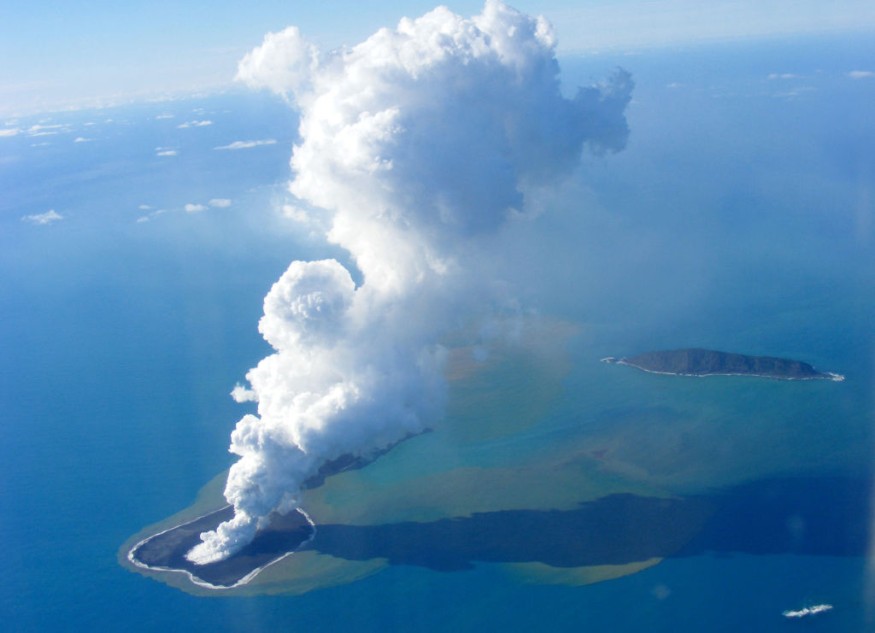An international team of researchers reveals that the underwater Hunga Tonga-Hunga Ha'apai volcanic eruption in 2022 can generate equatorial plasma bubbles (EPBs) in the ionosphere. This discovery, based on satellite and ground-based observations, highlights the significant disruption caused to satellite communication.
The findings of the study, titled "Generation of Equatorial Plasma Bubble After the 2022 Tonga Volcanic Eruption" published in Scientific Reports, suggest that there is a need for existing models on atmospheric and ionospheric interactions to be revised.

Hunga Tonga Volcanic Eruption Continues To Astound
The Hunga Tonga-Hunga Ha'apai submarine volcano, situated near the Kingdom of Tonga, erupted violently in January last year. As per Live Science, the eruption produced the tallest recorded volcanic plume, reaching a height of 35 miles (57 kilometers), and caused tsunamis that reached as far as the Caribbean, making it the most potent natural explosion in over a century, comparable to the strength of the largest U.S. nuclear bomb.
Previous studies have shown that the eruption's atmospheric waves had enough strength to disturb the ionosphere, specifically its F-region, which contains the highest concentration of ions in the atmosphere. This disruption raised questions about the formation of "equatorial plasma bubbles" that can affect satellite communications and GPS signals in the ionosphere's equatorial regions.
Atsuki Shinbori, the lead author of the study and an atmospheric scientist at Nagoya University in Japan, told Space.com that these plasma bubbles are rarely observed in the ionosphere.
The research aimed to investigate whether volcanic eruptions and similar terrestrial events could generate such disturbances, shedding light on their impact on communication systems and providing valuable insights into ionospheric behavior.
In recent research, scientists utilized Japan's Arase satellite to identify equatorial plasma bubbles and monitored atmospheric waves using the Himawari-8 satellite. They also tracked ionospheric motions using ground-based stations.
As Space.com reported, the scientists detected equatorial plasma bubbles following the shockwave from the volcanic eruption that extended much higher than previously anticipated, reaching an altitude of at least 2,000 kilometers (1,240 miles). This finding contradicted the predictions of standard bubble models.
Researchers also unexpectedly observed a rapid increase in electron density and the elevation of the ionosphere hours before the initial arrival of the shockwave.
They proposed that this swift response might have occurred due to the interaction between atmospheric waves generated by the eruption and the electrically charged ions present in the ionosphere, causing energy to swiftly propagate along Earth's magnetic field lines.
READ ALSO : Hunga-Tonga Eruption: Strongest Volcanic Explosion of the Modern Era Based on Magnitude, Speed
Evolving Understanding of EPBs
The formation of EPBs occurs due to disruptions in plasma density caused by factors such as moving plasma, electric fields, and neutral winds. According to Earth.com, these irregularities grow and transform into tube-like structures along Earth's magnetic field lines, creating regions of depleted electron density.
EPBs have a significant impact on radio communications, distorting the path of radio signals traveling through the ionosphere. This distortion leads to rapid fluctuations in the signals' amplitude and phase, known as scintillations. These disruptions can cause errors in GPS positioning and even result in a loss of signal lock.
Studies indicate that atmospheric waves, potentially triggered by terrestrial events like earthquakes and volcanic eruptions, play a role in influencing the electron density gradient in the ionosphere, contributing to the formation of EPBs.
However, there is still much to learn about the development, evolution, and dynamics of these phenomena. Scientists employ various techniques, such as satellite observations, ground-based radar, and advanced computational modeling, to study EPBs and enhance our ability to predict their occurrence and understand their impact on communication systems.
RELATED ARTICLE: Tonga Volcanic Eruption Obliterated an Island Near It, Along With Life Forms Never Seen Before
Check out more news and information on Volcanoes in Science Times.
© 2026 ScienceTimes.com All rights reserved. Do not reproduce without permission. The window to the world of Science Times.










